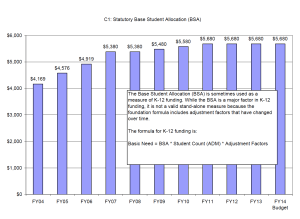Jack Balkin, in his text “Living Originalism”, suggests that the US Constitution provides an opportunity for the public to daily redeem itself, to reconnect and re-establish our commitment to a way of life despite ever changing circumstances, to pursue a more perfect union. He goes on to say,
The Constitution is an intergenerational project of politics, and the generations of We the People are the participants in the project. The Constitution contains commitments that We the People have only partially lived up to, promises that have yet to be fulfilled, and it is the task of each generation to do its part, however great or small, to help fulfill them nd to achieve a more perfect union in its own day. The participants in the project will argue among themselves about how to continue the project; they will make mistakes and commit injustices, but this by itself does not detract from the point of the enterprise. As the Talmud says, we are not required to complete the great Work, but neither are we free to refrain from it.”
If you read the proceedings of the Alaska Constitutional Convention (click here to listen here to Senator Gardner reading from the archives) you can still hear the same sentiments echoing off the chamber walls as our Founders strove to improve on what they found, so as to adopt a Constitution for their day:
“I believe we should take direct steps to maintain a free public education not encroached upon by any quarter. I think it might be well to bring out in the argument for the direct or indirect benefit of public funds for education is the matter that is now being faced in Europe and in particular in the Netherlands where they have what is called the form of educational pacification, where the government is splitting the tax dollar among some 500 different church groups providing for a parochial school benefit on an indirect basis, and in a community where there is maybe 500 school children there will be as high as seven or eight small schools scattered out throughout the community, not providing for the fullest benefit in the educational field as far as having a good complete centralized program. I think that sectarianism segregation in our educational system is bad for the children. I do not deny the right of people to have their own schools. However, I think that we should always look to the interest of the founders of our nation when they brought about the separation of church and state.” Jack Coghill Floor speech quoted in full with cite below.
Constitutions are, as Jefferson might suggest, sacred not so much for their text as for the compact they represent, our oath that as a society we will strive for the common good. That sense of responsibility is in fact the reason that there are among us those who signed our Constitution who have argued that no matter what else, the power to amend our Constitution should never be used in such a way as to rend asunder that which the Constitution has brought together (see quotes of Jack Coghill, Sr. and Vic Fischer, below.) Unfortunately, the Alaska Senate is engaged in just such a consideration this session.
Let there be no doubt that Joint Resolution 9 is not about rectifying historical faux pas, nor is it about rectifying an “old mistake”. But the underlying purpose, as distressing as that is, almost pales before the grief that this resolution is intended to bring to the people of this State. For this is in a very real sense a cynical ploy; an effort to do just what we should never do. This is an effort to drive a wedge through the heart of Alaska. This is designed to promote the most vitriolic clash in Alaska’s history, to rend our very soul in twain, and is is being done, believe it or not, in the name of Alaskan youth. For shame.
There are Alaska Senators who believe that they should use the Constitution as a political weapon, a device with which to promote their political agenda, not because it is in the best interests of all, but because they think they can get one over on someone else and get their way. In a 1996 article for the Atlantic Monthly about Jefferson and about the true nature of America’s “civil religion” (a far cry from the Protestant intolerance informing the positions of many in Juneau today), O’Brien states, “In an address at Michigan State University on May 5, 1995, President Bil Clinton warned right wing militias not to attempt to ‘appropriate our sacred symbols for paranoid purposes..” And that it is what we face today.
But the Alaska Legislature does not represent the interests of some Alaskans. It represents the interests of ALL Alaskans, and I have to ask the Legislature, in all sincerity, if they truly believe the horrific politicization of education that this resolution would unleash is going to benefit Alaska.
We do not live in a democracy. Indeed our founding fathers were terrified of democracy as well they should be, schooled as they were in Greek Philosophy. Instead they fashioned a republic specifically designed to prevent demagoguery. Specially fashioned to insure that popular passion would not result in momentary advantage. In order words, to protect us from what the Legislature is here asked to unleash.
We understand now that JR9 is about holding hostage the students of this State for the purpose of promoting a highly polarizing effort to divert public funds to private purposes, among those purposes, religious education. It is about opening Alaska media to millions of dollars of
outside advertising intended to destroy public employee unions and public education. It is about the Texification of Alaskan education.
I call on all Alaska Senators to uphold that redemption offered by our Constitution, and acknowledge that the Alaska Constitution, that organ of unification, must not be used as a means of shattering the public trust or confidence in its public institutions.
Resources
Balkin, J.M. Living Originalism. Harvard University Press, 2011. 75 http://books.google.com/books?id=khidNUWpY8UC&pg=PA75#v=onepage&q&f=false
O’Brien, Conor Cruise. “Thomas Jefferson: Radical and Racist.” Atlantic Monthly, 1996. Accessed March 27, 2013. http://www.theatlantic.com/past/docs/issues/96oct/obrien/obrien.htm.
‘But in his opinion, some of the more than 20 amendments have been political in nature, and unnecessary. “It’s not that the Constitution is a holy document. It’s that it has proven very effective.”‘ http://www.litsite.org/index.cfm?section=Reading-and-Writing&page=Pass-The-Word&viewpost=2&ContentId=1597
‘ “My inclination is to leave it alone,” Coghill says. “It’s a real simple and well put together document.”’ http://www.anchoragepress.com/news/constitutional-questions—in-you-can-vote-for-a/article_012327eb-76e8-5a72-9b5d-2ec4b55c146d.html
“COGHILL: Speaking in defense of my proposed amendment, I would first like to say I am very prone to the problem of putting any religious persecution into the Constitutional Convention or among the delegates. It would be the same thing as me trying to convince Mr. Ralph Rivers of the principles of the Republican party, and he in turn of the party he belongs to. I don’t believe that is the problem at all. I think that they certainly have a right, a private right or a religious right, or a parochial right under our constitution to have schools. However, I believe that the way our government was set up 175 years ago, that the founders felt that public education was necessary to bring about a form of educating the whole child for civic benefit through a division of point of the home taking a certain part of the child, the church taking a certain part of this education, and the government or state through public schools taking the other part. I adhere to that principle, and I might say that I am the president of the Association of Alaska School Boards and one of the formers of that twelve-point program we developed in Anchorage last October. I think that the problem could probably be well misconstrued here as to the motive and intent. However, I feel that the intent of public education is primarily a state function and does not belong to any private or any one particular group, whether they are in the minority or the majority. I believe we should take direct steps to maintain a free public education not encroached upon by any quarter. I think it might be well to bring out in the argument for the direct or indirect benefit of public funds for education is the matter that is now being faced in Europe and in particular in the Netherlands where they have what is called the form of educational pacification, where the government is splitting the tax dollar among some 500 different church groups providing for a parochial school benefit on an indirect basis, and in a community where there is maybe 500 school children there will be as high as seven or eight small schools scattered out throughout the community, not providing for the fullest benefit in the educational field as far as having a good complete centralized program. I think that sectarianism segregation in our educational system is bad for the children. I do not deny the right of people to have their own schools. However, I think that we should always look to the interest of the founders of our nation when they brought about the separation of church and state. The problem was brought, and it was brought about by Thomas Jefferson quite well when he said, “If a nation expects to be ignorant and free in the state of civilization, it expects something that never shall be”. Therefore out of his deliberations with John Madison they brought about a form of free public education starting in Virginia, and it has come forward ever since under the intent of having the tax dollar only brought to the public educational system. I know there have been many law cases on it, Supreme Court rulings and what not, and I think that the matter still is divided as far as the general public is concerned, as between the sects of religion and not on the principle of preserving the free public education as an instrument of the state.” From the Minutes of the 48th Day of the Alaska Constitutional Convention Accessed at http://www.law.alaska.gov/doclibrary/conconv/48.html
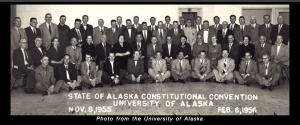


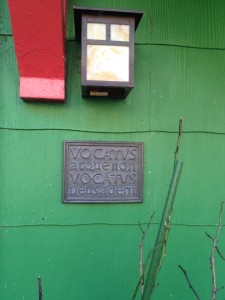
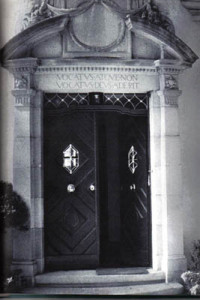
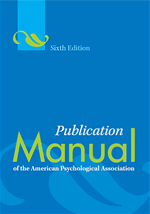 I recently had a tutee complain bitterly about an teacher marking down papers because the papers did not comply with the instructors perspective on a particular style manual. It is not the first time for pompous declarations on all manner of style issues, and this time, I though I would follow through and pose the question presented to the style experts at the APA.
I recently had a tutee complain bitterly about an teacher marking down papers because the papers did not comply with the instructors perspective on a particular style manual. It is not the first time for pompous declarations on all manner of style issues, and this time, I though I would follow through and pose the question presented to the style experts at the APA.
